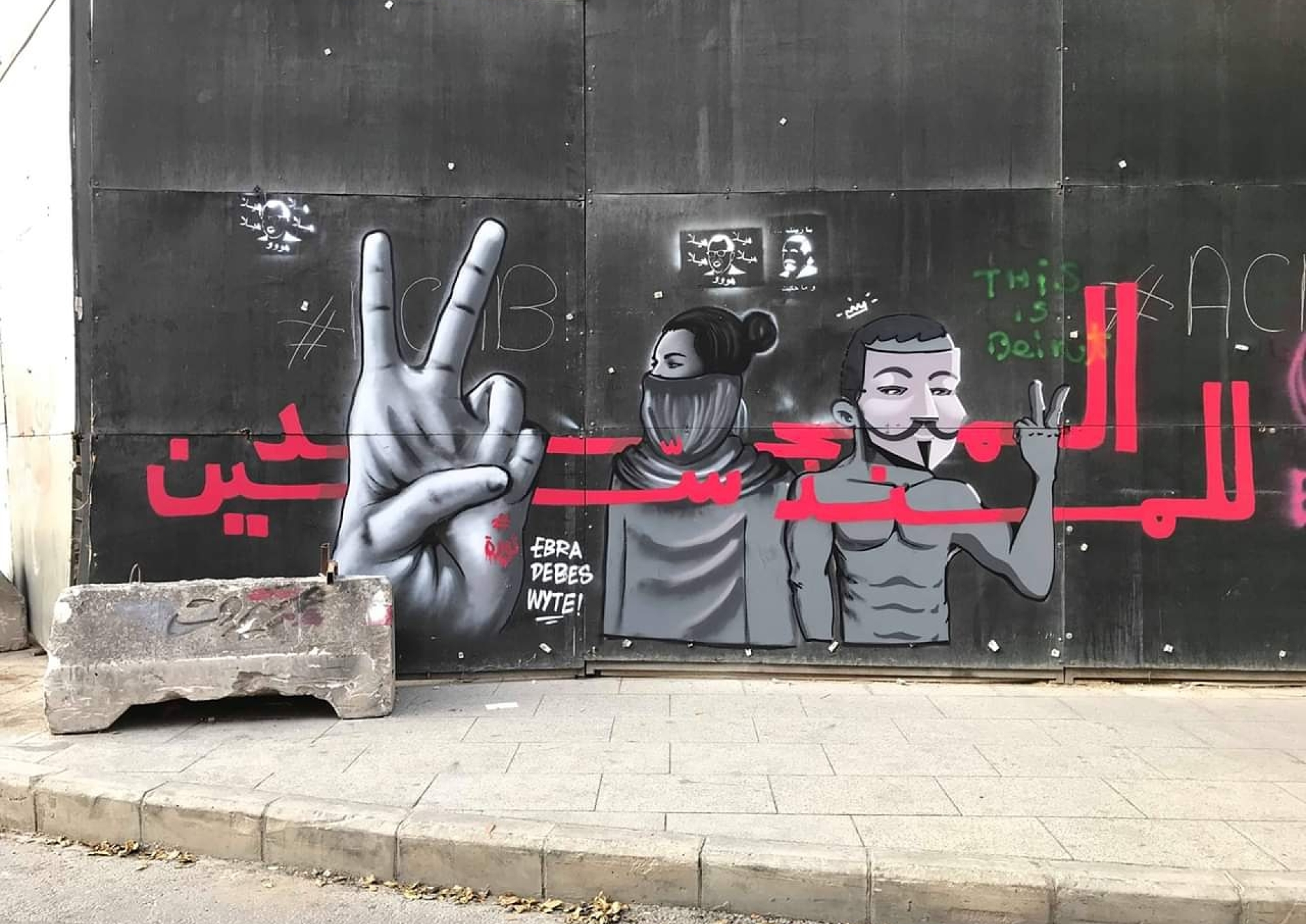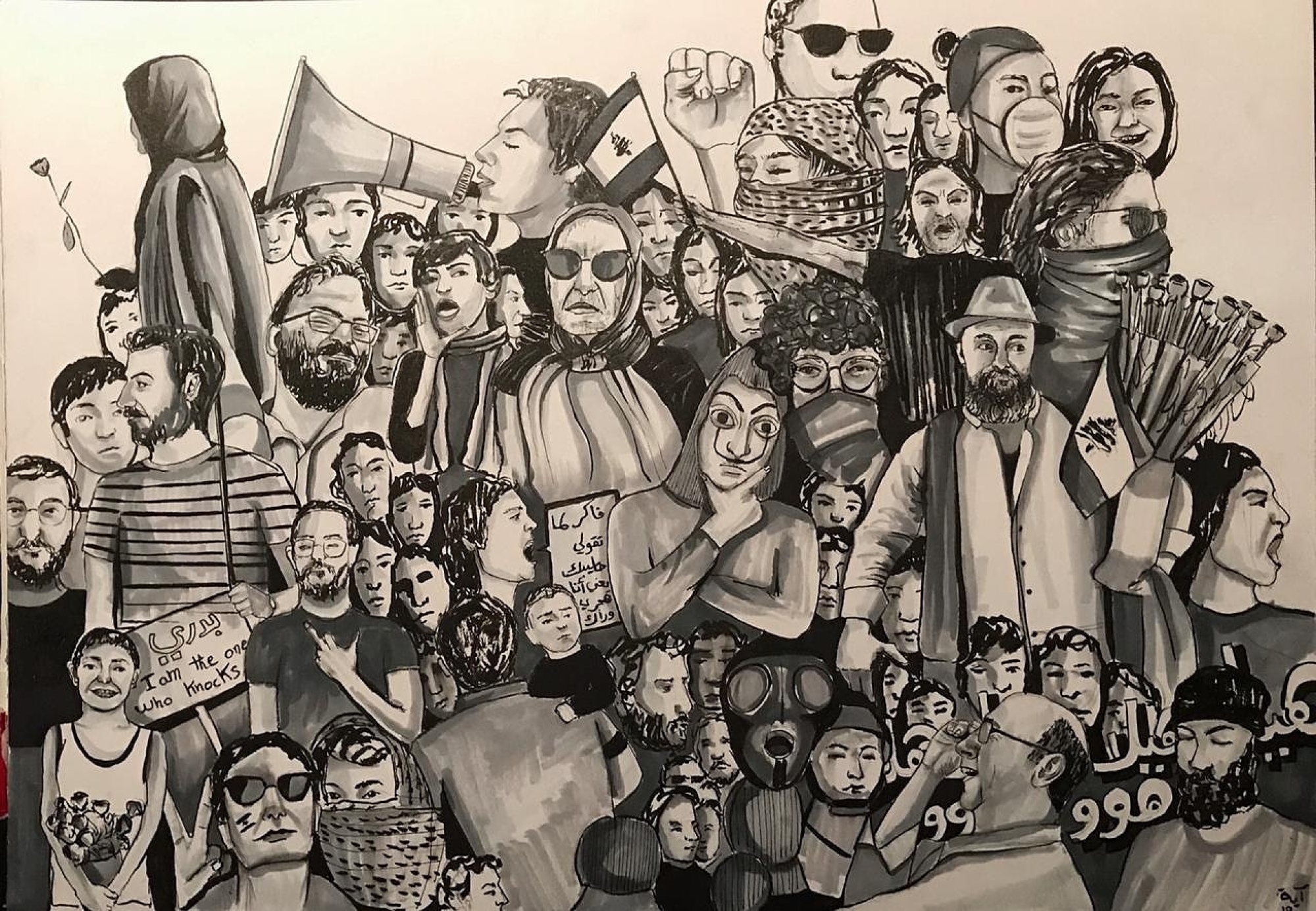Glory to the Infiltrators
img_20191023_211916_389.jpg

We painted this graffito on the third day of the revolution, following two days filled with riots and roadblocks. We attended the protests and lived the fear, happiness, excitement, and all the other contradictory feelings. This is how the revolution began. We were immediately inspired by this reality. Youssef Taliyeh chose to portray a shirtless caricature to represent most of the young men who were rioting and wearing the mask from the movie turned famous by the revolution. They used the mask for safety, to hide their identities, but also for its revolutionary symbolisms. I painted a young woman covering her face. I knew that people would most certainly deny the existence of young women and girls in the riots because of their assumed tenderness or out of fear, which would keep them away from the streets. However, it was not the case; I was personally running into a lot of other women I would meet at the riots, our faces covered to protect ourselves from the teargas thrown at us. And finally, Ibrahim Taliyeh painted the victory sign.
We wrote “glory to the infiltrators” between those characters, as we believe that they, or we, are people who have been angered by those in power for a long time. So they went down in revenge, broke things, and blocked roads. We painted them, turning them into icons, approving of their acts, because they are means of protest that send a strong message to people in positions of power and scare them. Those are the people who ignited the revolution. As for those who disapprove of these acts, arguing that our methods of protest need to be civilized, they must have never seen any revolutionary protests that led to change. After all the protests in Beirut, we were accused of being infiltrators – the people deprived of their basics livelihood needs were accused of being infiltrators. To that, we responded, “glory to the infiltrators.”

